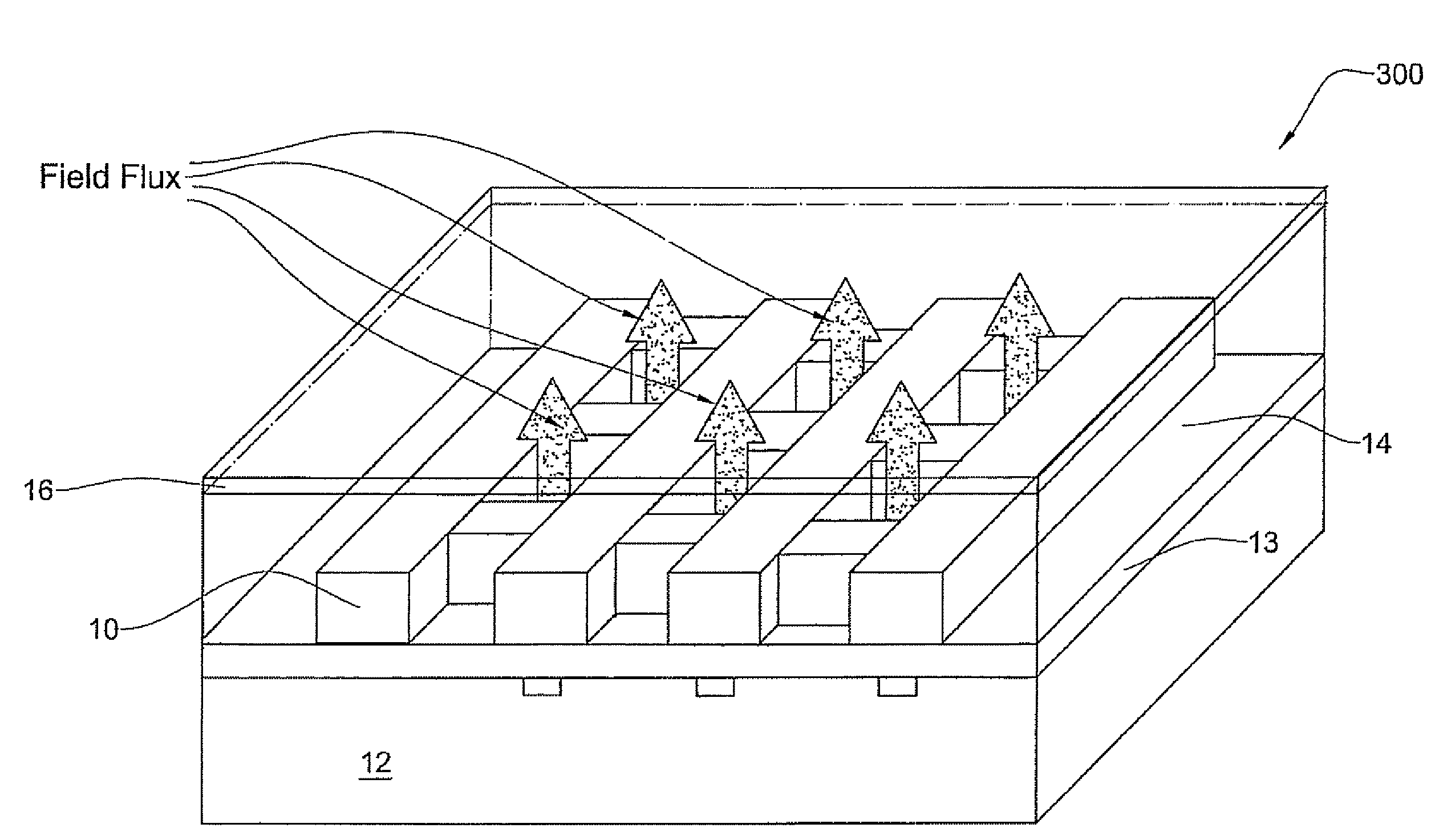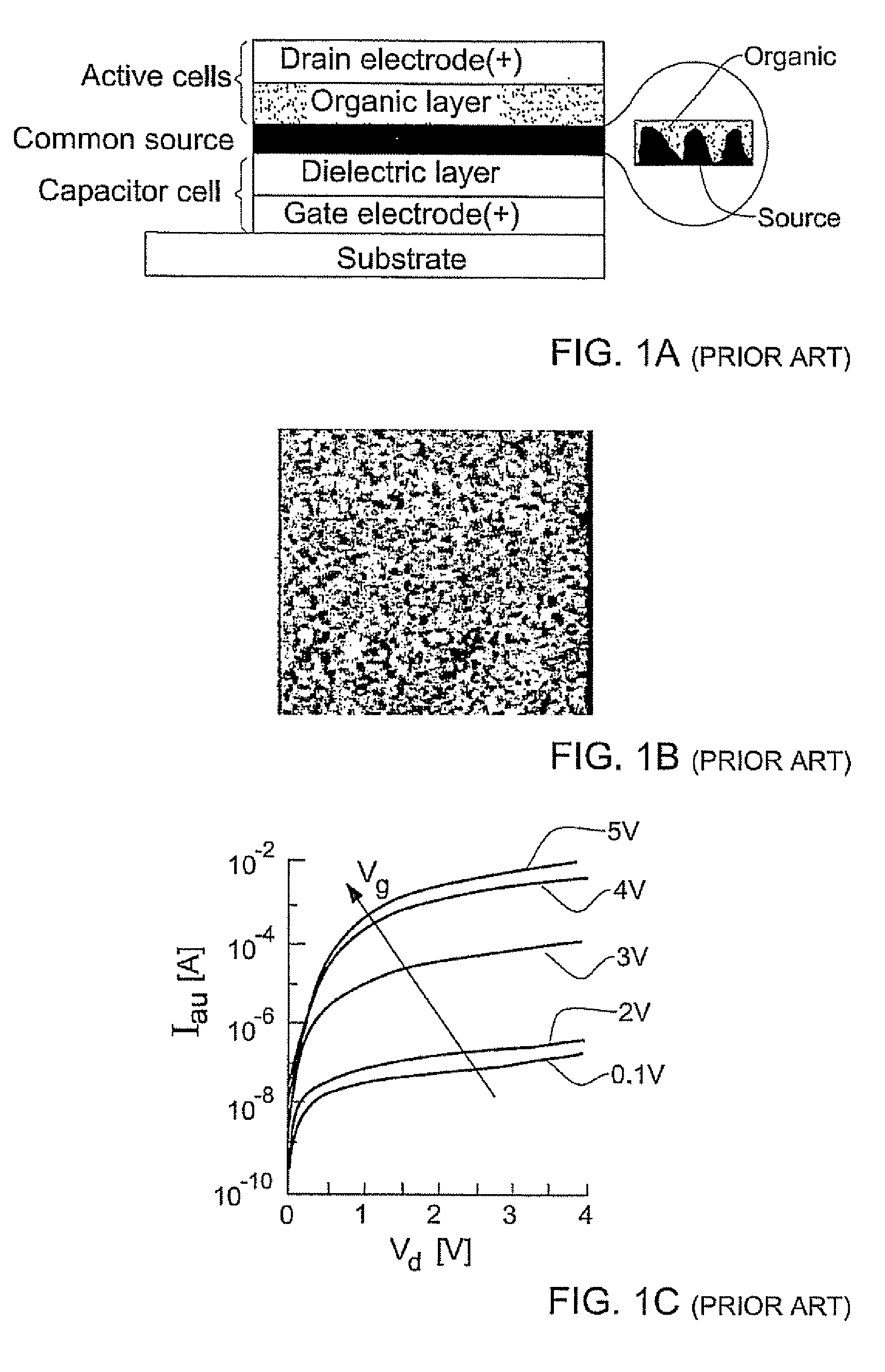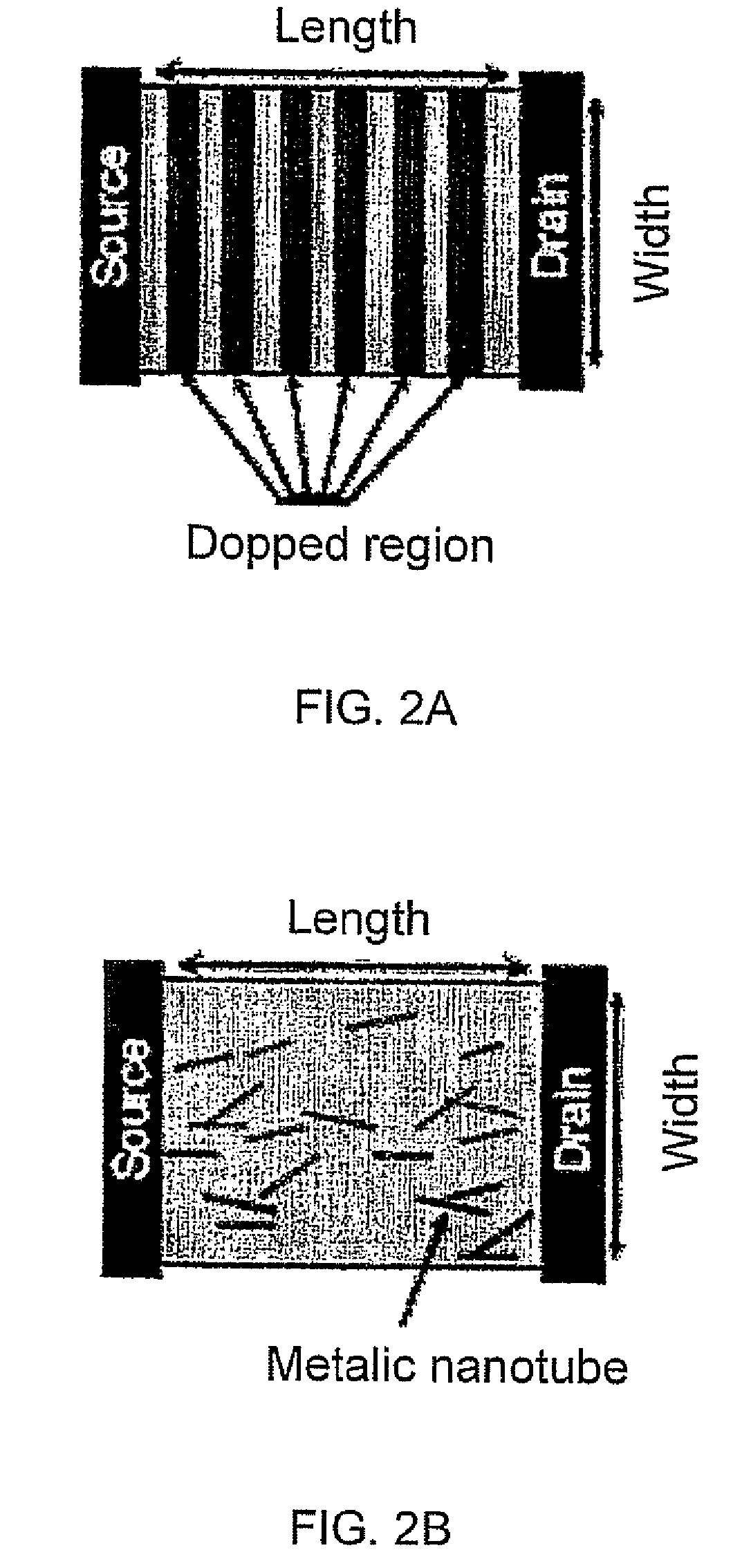Transistor structures and methods of fabrication thereof
a transistor and structure technology, applied in the direction of transistors, thermoelectric devices, nano-informatics, etc., can solve the problems of limited charge-carrier mobility of organic materials, limited current such a transistor can provide, and less than 1 cmsup>2, and achieve the effect of reducing the operational degradation of disordered materials
- Summary
- Abstract
- Description
- Claims
- Application Information
AI Technical Summary
Benefits of technology
Problems solved by technology
Method used
Image
Examples
Embodiment Construction
[0089]FIGS. 1a-b show the known gate-source-drain vertical organic field effect transistor (VOFET) structure described in the above-indicated article of L. Ma and Y. Yang, “Unique architecture and concept for high-performance organic transistors”, Applied Physics Letters 85, 5084-5086 (2004)]. FIG. 1c shows the VOFET conductance characteristics for different gate-source voltage.
[0090]FIGS. 2a and 2b illustrate the known planar transistors described in [6, 7].
[0091]The present invention, according to its one aspect, provides a novel transistor structure having a patterned electrically-conductive layer associated with an active element of the transistor. This electrically-conductive layer has a two-dimensional pattern defining spaced-apart electrically conductive regions. This allows for increasing an electric current through the transistor, as well as a switching speed thereof.
[0092]The invention can be used in vertical configuration transistors and in lateral configuration transisto...
PUM
| Property | Measurement | Unit |
|---|---|---|
| thickness | aaaaa | aaaaa |
| channel current | aaaaa | aaaaa |
| height | aaaaa | aaaaa |
Abstract
Description
Claims
Application Information
 Login to View More
Login to View More - R&D
- Intellectual Property
- Life Sciences
- Materials
- Tech Scout
- Unparalleled Data Quality
- Higher Quality Content
- 60% Fewer Hallucinations
Browse by: Latest US Patents, China's latest patents, Technical Efficacy Thesaurus, Application Domain, Technology Topic, Popular Technical Reports.
© 2025 PatSnap. All rights reserved.Legal|Privacy policy|Modern Slavery Act Transparency Statement|Sitemap|About US| Contact US: help@patsnap.com



